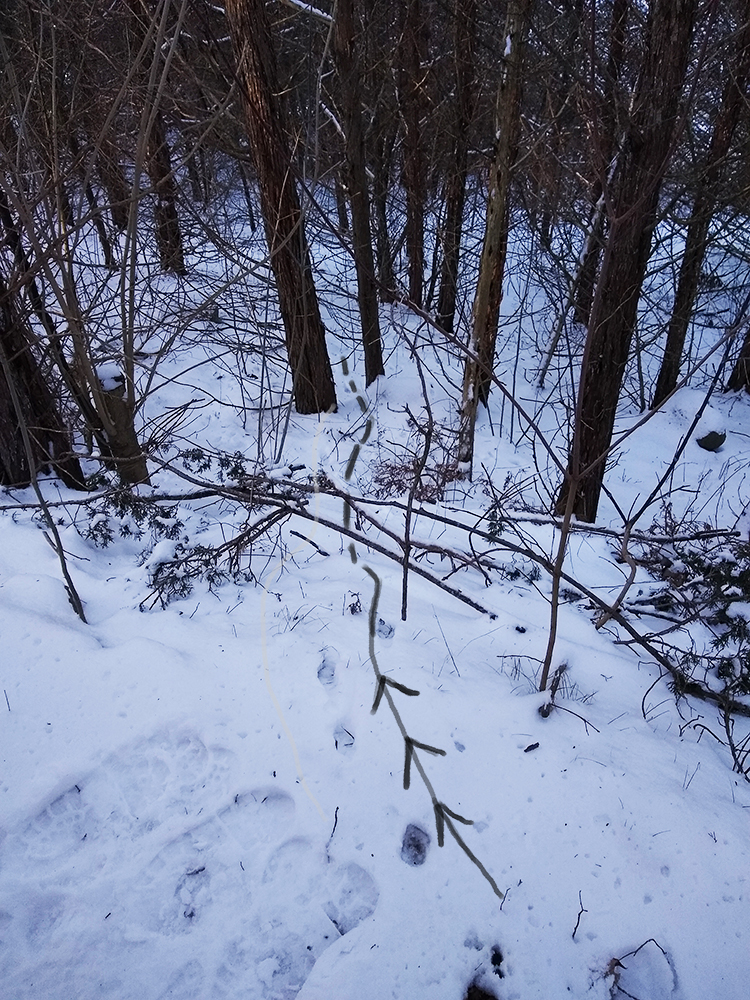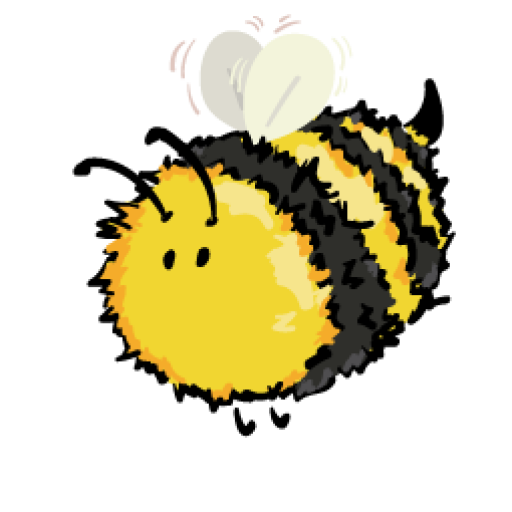I went for a walk with a fox yesterday.
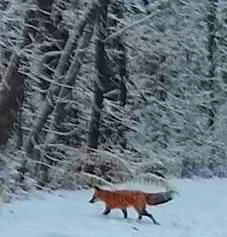
Not at the same time of course. He* was long gone by the time I followed in his footsteps. (*I am calling the fox “he” for a reason, which I will get to.) But Neil and I often chat about how spending time with animal sign feels like time with the animal. Perhaps because you are so focused on its fox-ness. Everything but this fox is quiet. You are tracking this fox’s steps. Wondering what this fox was doing. When was he here and where was he going. Okay, he went here, and then here, but then where…. a-ha! over here.
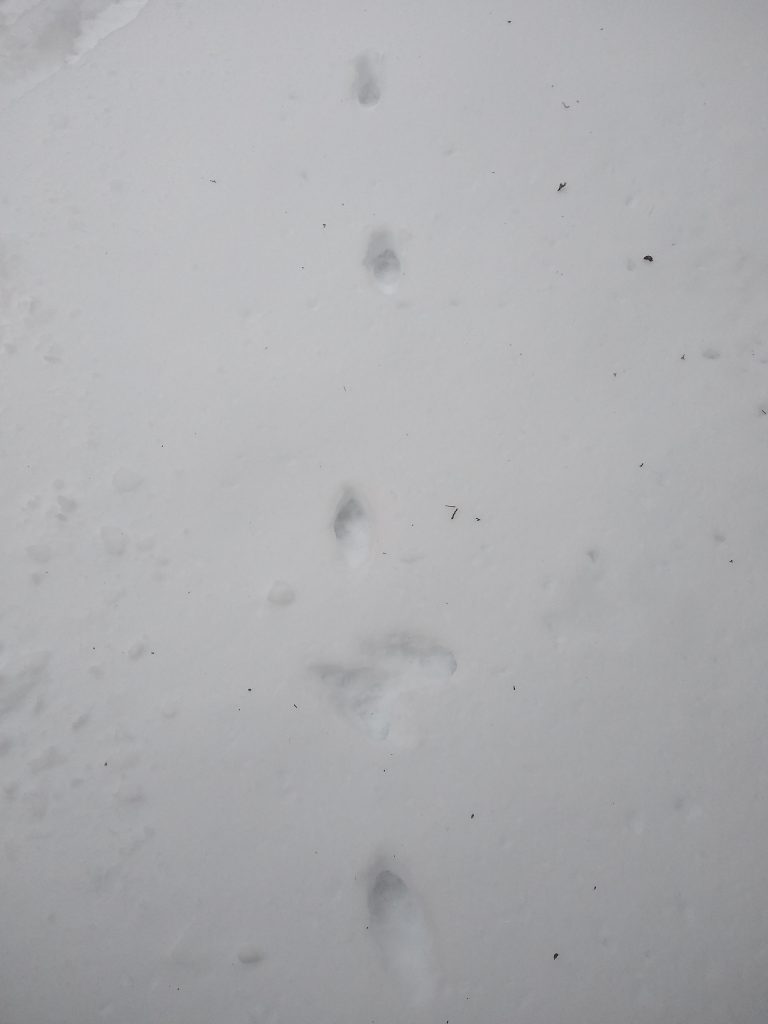
It is a tremendous thrill for me to see the animals who live in or pass through our woods while they are actually in front of me. But what I love about tracks and sign is that I truly feel like I can take a lot of time “with” an animal, without disrupting it. I am not spooking its prey, or jeopardizing its chance at dinner. I am not causing it to waste precious foraged energy running from or avoiding me. It doesn’t need to worry about protecting its young from me. We can be together, apart. A healthy respect for the wild-ness of both its life, and mine.
They are not brethren, they are not underlings: they are other nations, caught with ourselves in the net of life and time, fellow prisoners of the splendour and travail of the earth.”
~Henry Breston
This fox started his visit to our home with a stop for a snack. He came down from the woods via a slope behind our house. The slope is a sort of overgrown garden that we still haven’t fully figured out. Perhaps it once had more form, but I believe it is mostly there as a berm, defending the house from the pressure of the hillside — being situated on a wooded hillside can put an awful lot of (literal) pressure on a house.
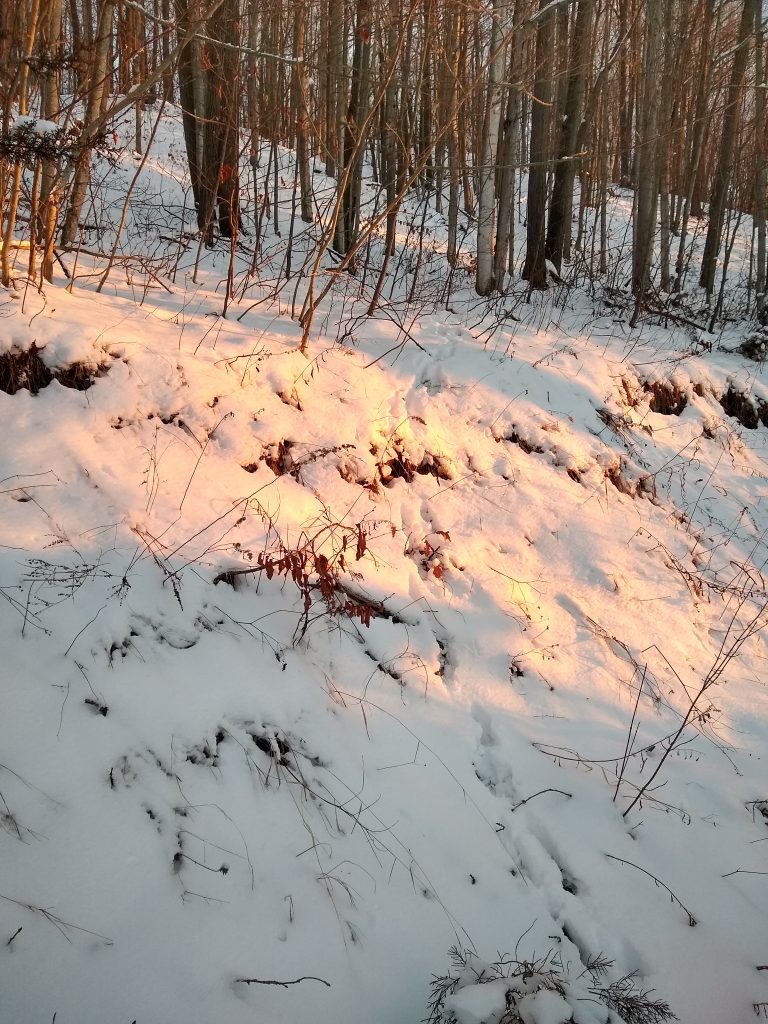
The “garden” slope has lots of brush and grasses, which I’m sure are full of all manner of things for a fox to munch on.
The fox, I believe, agreed.
Below is his first stop. A depression in the snow beside a grassy opening makes me think he stopped for awhile to hunt a mouse. Which is the inspiration for this post’s title — lifted from this fasinating article by NPR, exploring how foxes hunt (hint: it may have something to do with magnetics!), which is well worth a read.

Based on an extra footfall, and the indistinct shapes within the prints, I believe the fox then retraced his steps a bit, before continuing on.
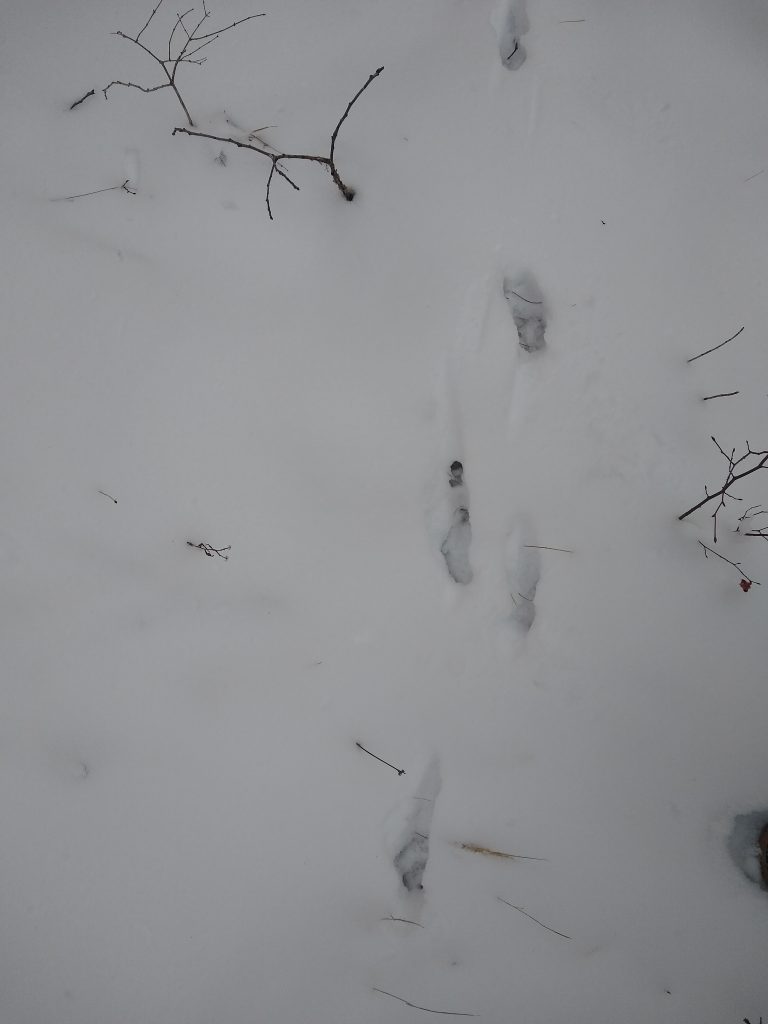
Either just before or just after his meal, the fox marked his trail. Under this little cedar was a splash of pee. Usually it is not until I find urine with this distinct foxy scent, that I will confidently switch from “canid” to fox. As is often the case, I was initially following these tracks in roughly reverse order. So I was following “canid” tracks for quite awhile.
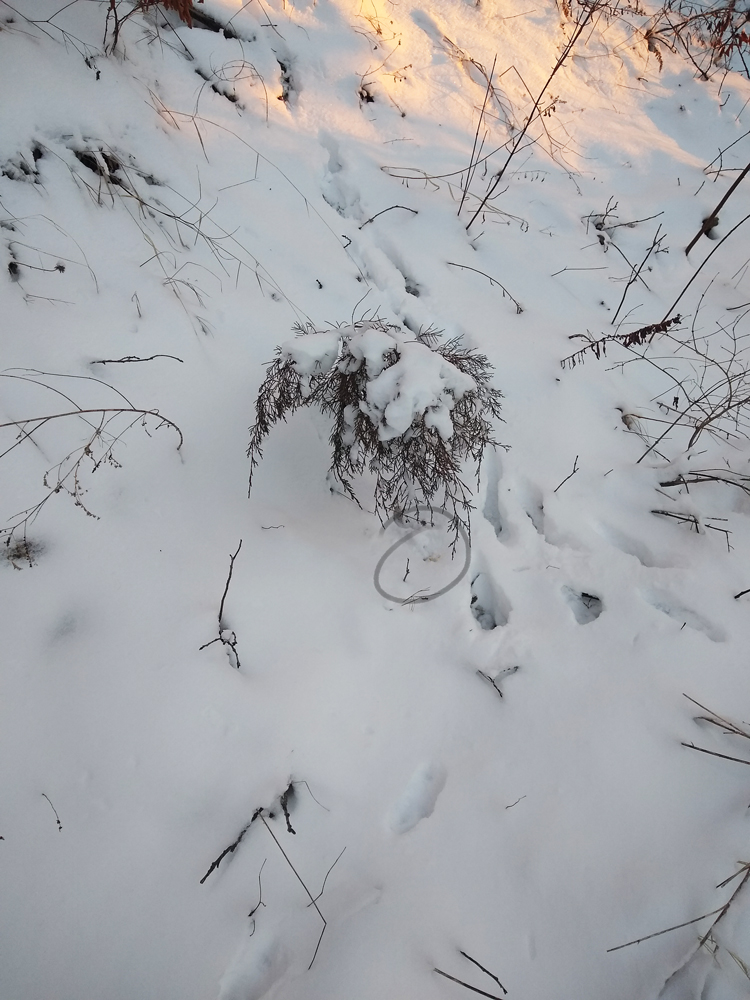
After the shrubbery was good and marked, the fox was off again.
From the “garden”, the fox moved on towards the driveway, making another marking pitstop along the way. Here is where I decided the fox was likely a “he”, based on the position of the feet and urine. Both male (dog) and female (vixen) fox will scent mark, though males are much more likely to cock their leg when they do so.
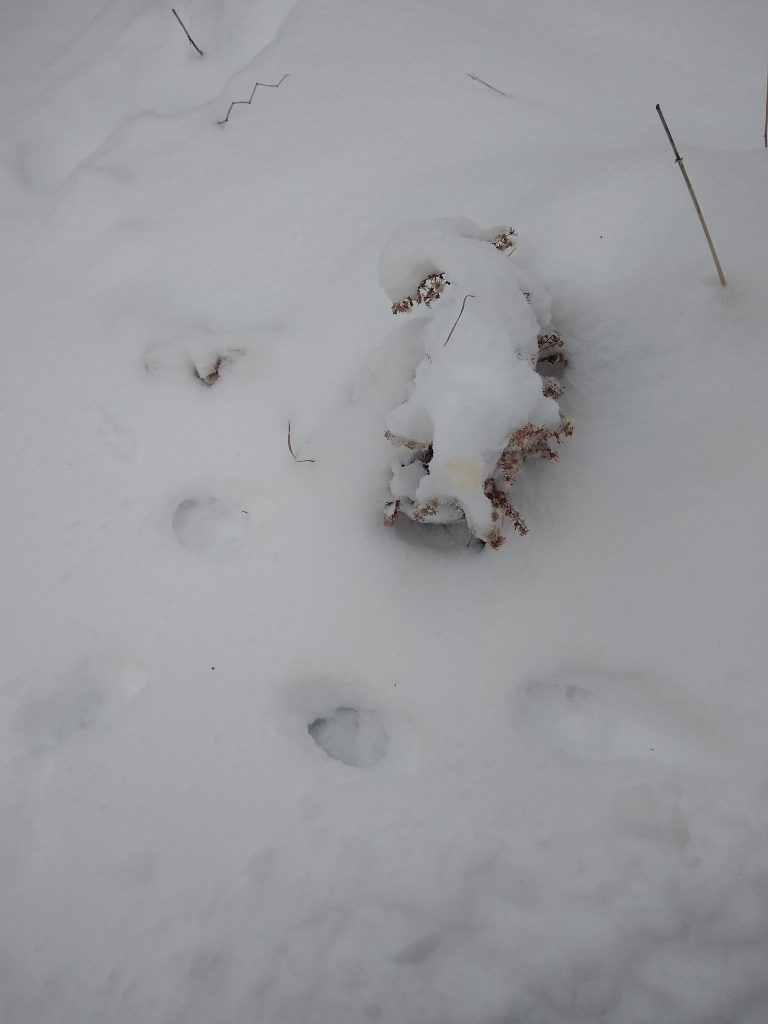
The fox went down our driveway a little ways, before I lost the trail. I then picked up a trail coming back up our driveway, on the other side. I believe this to be the same fox, based in part that we have seen fox do this in real time — they seem to think of “partway down our driveway” as some sort of boundary line …or at least as far as they get before they remember they wanted to check out our yard as well.
Some of the tracks coming back up the driveway were harder to find. There is a lot of “noise” at the top of the driveway. Plow marks, tire tracks, bootprints, and all the various activity under the birdfeeders. Can you spot the fox track in the bootprint below?
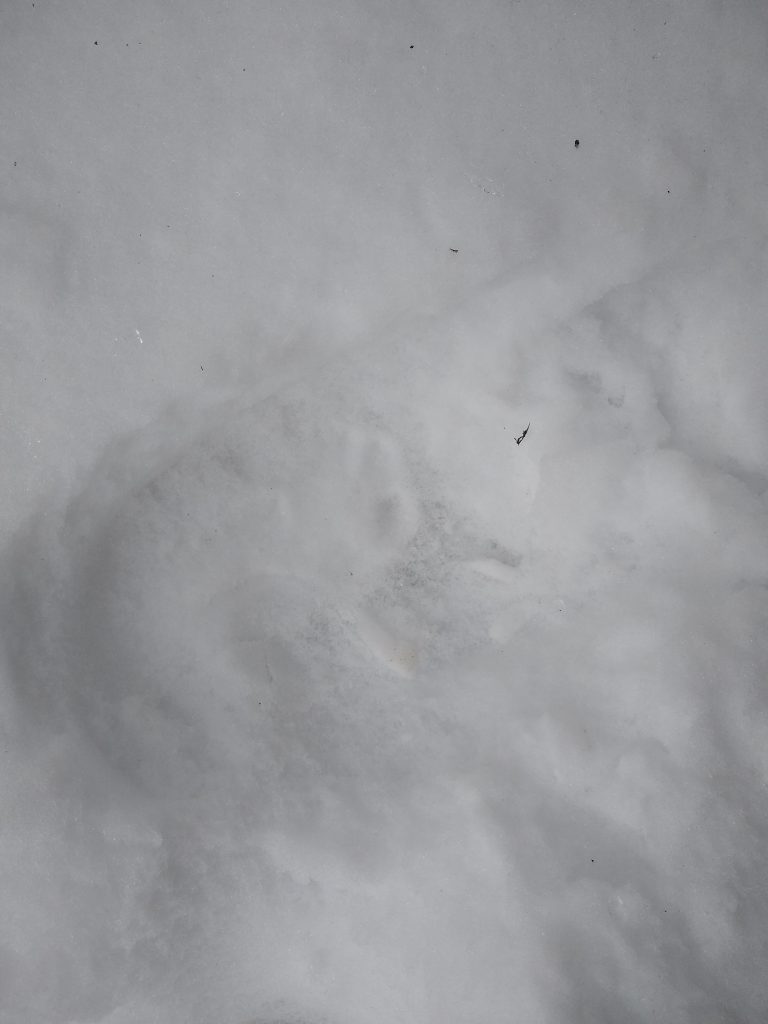
How about now? Sometimes using the spacing from a nearby track can help you find a hard to see print.
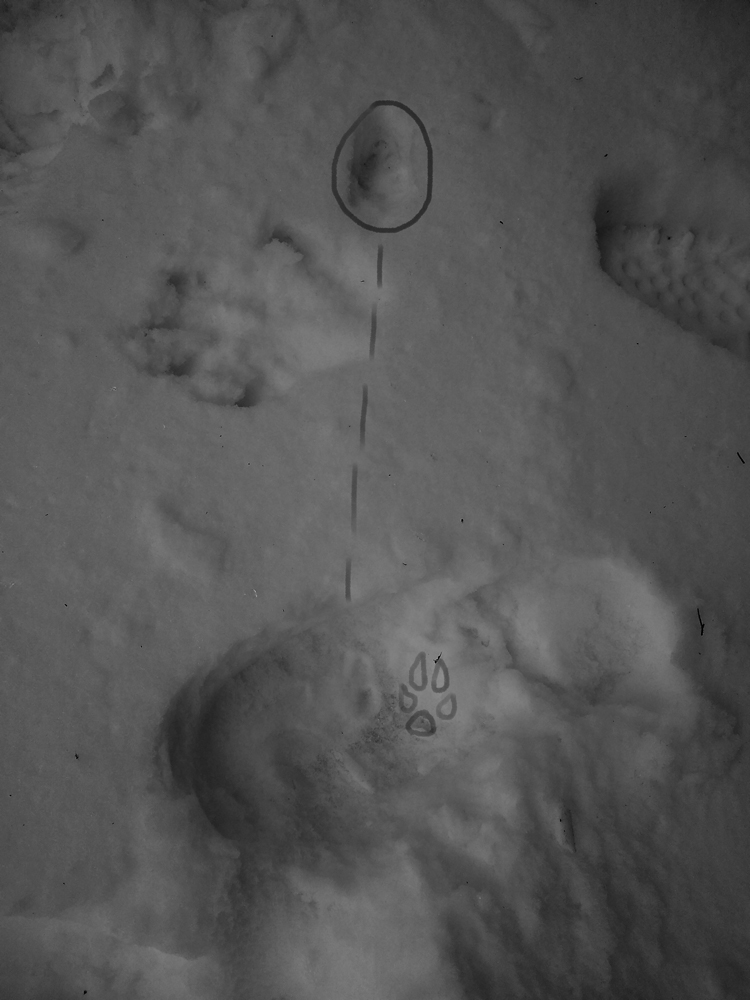
The fox then went behind the front garden, around the car tent, over to our walking path through the backyard. When they come through the yard, animals often follow our bootprints, and it’s a bit incredible how well their tracks can disappear into our trail.
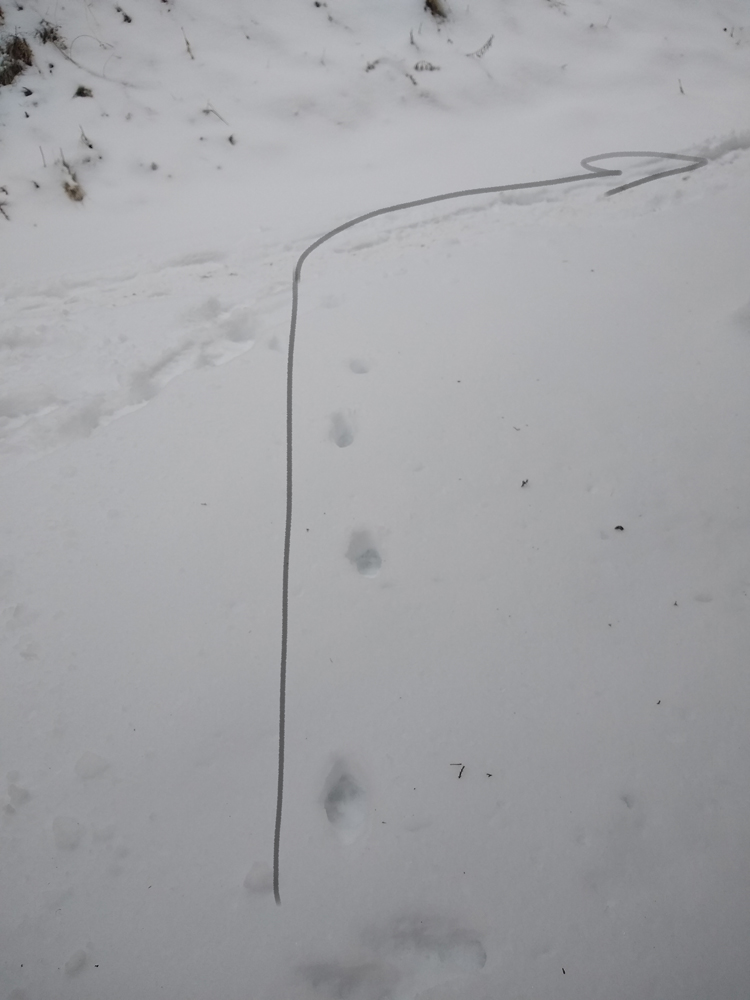
Finally the fox went behind the chicken run (note: the chickens are just fine), before trotting away down the lower hillside, into the coniferous woods. There look to be many tracks down there, and perhaps I will go read some of those stories another day.
I hope you got your invisible mouse, little fox. And I hope to see you again soon.
